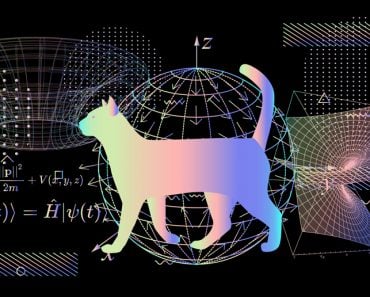Table of Contents (click to expand)
Chaos theory is the study of non-linear systems that are impossible to predict or control. It is often described by fractal mathematics, which captures the infinite complexity of nature. Many natural objects exhibit fractal properties, including landscapes, clouds, trees, organs, rivers, etc.; many of the systems in which we live exhibit complex, chaotic behavior.
Chaos theory can be described as the science of surprises. It deal with systems that are non-linear and unpredictable, and teaches us to expect the unexpected. Most scientific domains deal with predictable models, such as gravity, chemical reactions and electricity. Chaos theory deals with models that are entirely impossible to predict or control, such as turbulence, weather, and the stock market. These phenomena are often described by fractal mathematics, which captures the infinite complexity of nature. Many natural objects exhibit fractal properties, including landscapes, clouds, trees, organs, rivers, etc.; many of the systems in which we live exhibit complex, chaotic behavior. Before we get into the principles of chaos theory, let’s take a brief look into the history of chaos theory.
Recommended Video for you:
History
In 1961, a meteorologist by the name of Edward Lorenz made a profound discovery. Lorenz was utilizing the latest computer of that time to predict the weather. He was imbued with a sense of zeal to create a mathematical model for these unpredictable patterns. In this mathematical model, he plugged in a set of numbers that gave an accurate representation of the current weather; this set of numbers would predict the weather a few minutes in advance. Upon the successful execution of the program, Lorenz grew more focused on creating long-term forecasts. This would be done by feeding the weather forecast feedback of the predicted weather back into the computer. The accurate minute-by-minute forecasts started adding up to to months and years.

On a particular day, Lorenz decided to run the weather forecasting program again. Wanting to save time, he chose not to start from scratch, and instead took a value that had halfway run through the computer program and use that as the starting point to restart the program. After a supposed coffee break (dramatic, just like in movies), he returned to discover something completely unexpected. Although the computer’s new predictions started the same as before, the two sets of forecasts were dramatically different. So what seemed to have gone wrong when there could have been any calculation errors that could have occurred?
Lorenz soon realized that the computer was printing out the predictions to three decimal places; it was crunching the numbers internally using six decimal places. So, while Lorenz had started the second run of the program with the number 0.506, the original run had used the number 0.506127. A difference of one part in a thousandth had a drastic effect. This is the sort of difference that a flap of a butterfly’s wing might make to the breeze on your face. The starting weather conditions had been virtually identical. The two predictions were anything but. Lorenz had found the seeds of chaos.
Also Read: Do Laws Of Quantum Physics Also Apply In Biology?
Principles Of Chaos Theory
There are a number of theories that are a sub constituent of chaos theory itself. The most predominant and most famous of these is the Butterfly Effect. This effect grants the power to cause a hurricane in China to a butterfly flapping its wings in New Mexico. The transition from the flap of a wing to a massive storm might take a long time, but the connection is real. If the butterfly had not flapped its wings at just the right point in space/time, the hurricane would not have happened. A more philosophical approach to this problem would be taking the standpoint that the smallest actions we perform have a drastic impact on our lives in the long run.
The next branch in chaos theory that we will look into is Unpredictability. It is a well-established fact that we can never know all the initial conditions of a complex system in sufficient detail, meaning that we cannot hope to predict the ultimate result a complex system will produce. Even the slightest errors in measuring the state of a system will be amplified dramatically, rendering any prediction useless. Since it is impossible to measure the effects of all the butterflies and other such input disturbances in the world, accurate long-range weather prediction will always remain impossible.
The third idea to touch upon is Mixing and Feedback. Mixing or Turbulence ensures that two adjacent points in a complex system will eventually end up in very different positions after some amount of time has elapsed. An example of this we can consider is to consider two neighboring water molecules, which may end up in different parts of the ocean or even in different oceans. A group of helium balloons that launch together will eventually land in drastically different places. When considering feedback, it is good to understand that systems often become chaotic when there is feedback present. An example that illustrates this behavior is the behavior of the stock market. As the value of a stock rises or falls, people are more inclined to buy or sell that stock. This, in turn, further affects the price of the stock, causing it to rise or fall more chaotically.
One of the final things to touch upon is Fractals. A fractal is a never-ending pattern. Fractals are infinitely complex patterns that are self-similar across different scales. They are created by repeating a simple process over and over in an ongoing feedback loop. Driven by recursion, fractals are images of dynamic systems – the pictures of chaos. Geometrically, they exist between our familiar dimensions. Fractal patterns are extremely familiar, since nature is full of them, including elements of trees, rivers, coastlines, mountains, clouds, seashells, hurricanes, etc. There are a plethora of other subjects upon which chaos theory touches, but the above mentioned are the most prominent and interesting ones.
Also Read: What Is A Double Pendulum?












